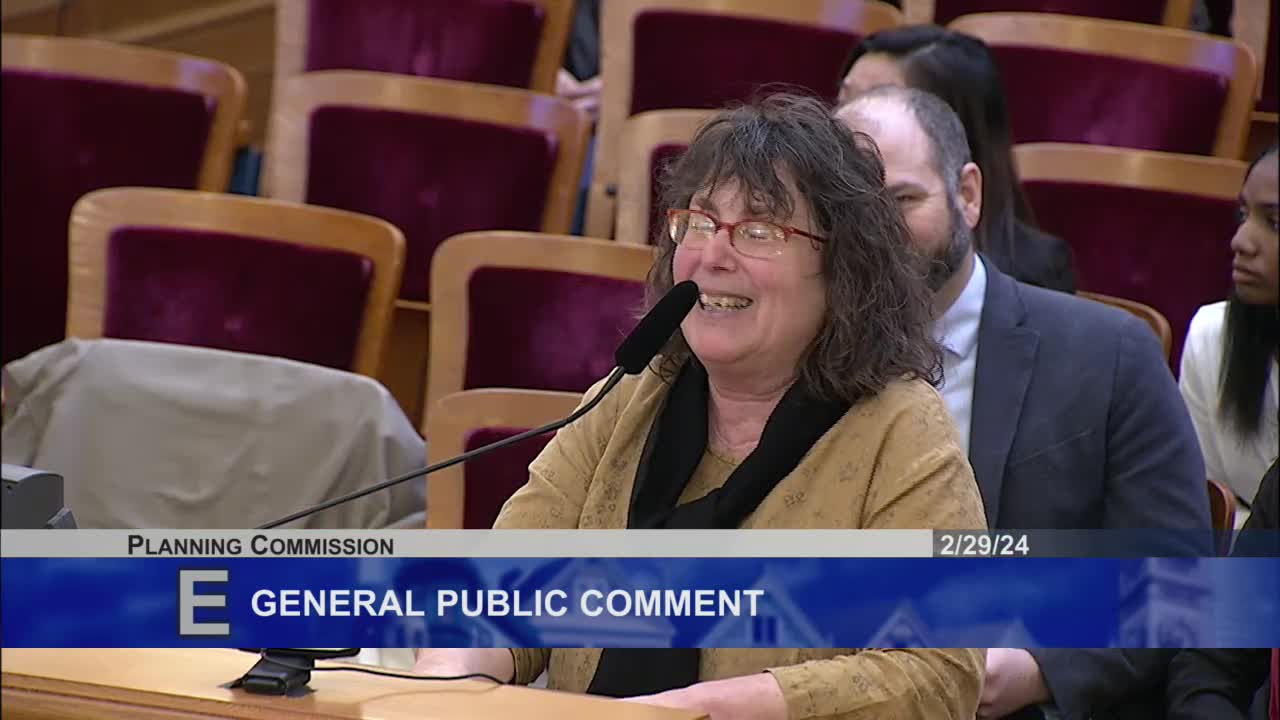San Francisco's Affordable Housing Leadership Council presents urgent recommendations for increased production
February 29, 2024 | San Francisco City, San Francisco County, California

This article was created by AI summarizing key points discussed. AI makes mistakes, so for full details and context, please refer to the video of the full meeting. Please report any errors so we can fix them. Report an error »

The San Francisco City Commission convened on July 4, 2025, to discuss critical updates regarding affordable housing initiatives and funding strategies. The meeting began with a moment of recognition for Commissioner Ruiz, who is stepping down, followed by a reiteration of the city's commitment to affordable housing, emphasizing that existing housing is the most affordable option available.
The primary focus of the meeting was an informational presentation on the Affordable Housing Leadership Council's recommendations. Dan Adams, the director of the Mayor's Office of Housing and Community Development, highlighted the urgency of increasing affordable housing production in San Francisco, which has seen a significant rise in production goals set by the state. The city is now tasked with producing 5,800 affordable units annually, a fivefold increase from current rates of approximately 1,000 units per year.
Adams acknowledged the challenges posed by a shifting funding landscape, noting that previous funding sources, including the 2019 housing bond and pandemic recovery funds, are dwindling. He emphasized the need for increased federal and state funding to meet the ambitious housing goals. The council's recommendations included advocating for additional resources, improving local processes, and fostering innovative partnerships to enhance housing production.
Public comments during the meeting underscored the urgency of the situation, with community members urging the commission to establish clear benchmarks and timelines for implementing the council's recommendations. Concerns were raised about the potential impact of proposed cuts to affordable housing funding in the state budget, which could hinder the city's ability to meet its housing goals.
The meeting concluded with a commitment to continue engaging with community partners and exploring new ideas to address the affordable housing crisis. The commission plans to monitor the budget closely and work collaboratively with various stakeholders to ensure the sustainability of existing housing resources while striving to increase production.
The primary focus of the meeting was an informational presentation on the Affordable Housing Leadership Council's recommendations. Dan Adams, the director of the Mayor's Office of Housing and Community Development, highlighted the urgency of increasing affordable housing production in San Francisco, which has seen a significant rise in production goals set by the state. The city is now tasked with producing 5,800 affordable units annually, a fivefold increase from current rates of approximately 1,000 units per year.
Adams acknowledged the challenges posed by a shifting funding landscape, noting that previous funding sources, including the 2019 housing bond and pandemic recovery funds, are dwindling. He emphasized the need for increased federal and state funding to meet the ambitious housing goals. The council's recommendations included advocating for additional resources, improving local processes, and fostering innovative partnerships to enhance housing production.
Public comments during the meeting underscored the urgency of the situation, with community members urging the commission to establish clear benchmarks and timelines for implementing the council's recommendations. Concerns were raised about the potential impact of proposed cuts to affordable housing funding in the state budget, which could hinder the city's ability to meet its housing goals.
The meeting concluded with a commitment to continue engaging with community partners and exploring new ideas to address the affordable housing crisis. The commission plans to monitor the budget closely and work collaboratively with various stakeholders to ensure the sustainability of existing housing resources while striving to increase production.
View full meeting
This article is based on a recent meeting—watch the full video and explore the complete transcript for deeper insights into the discussion.
View full meeting
